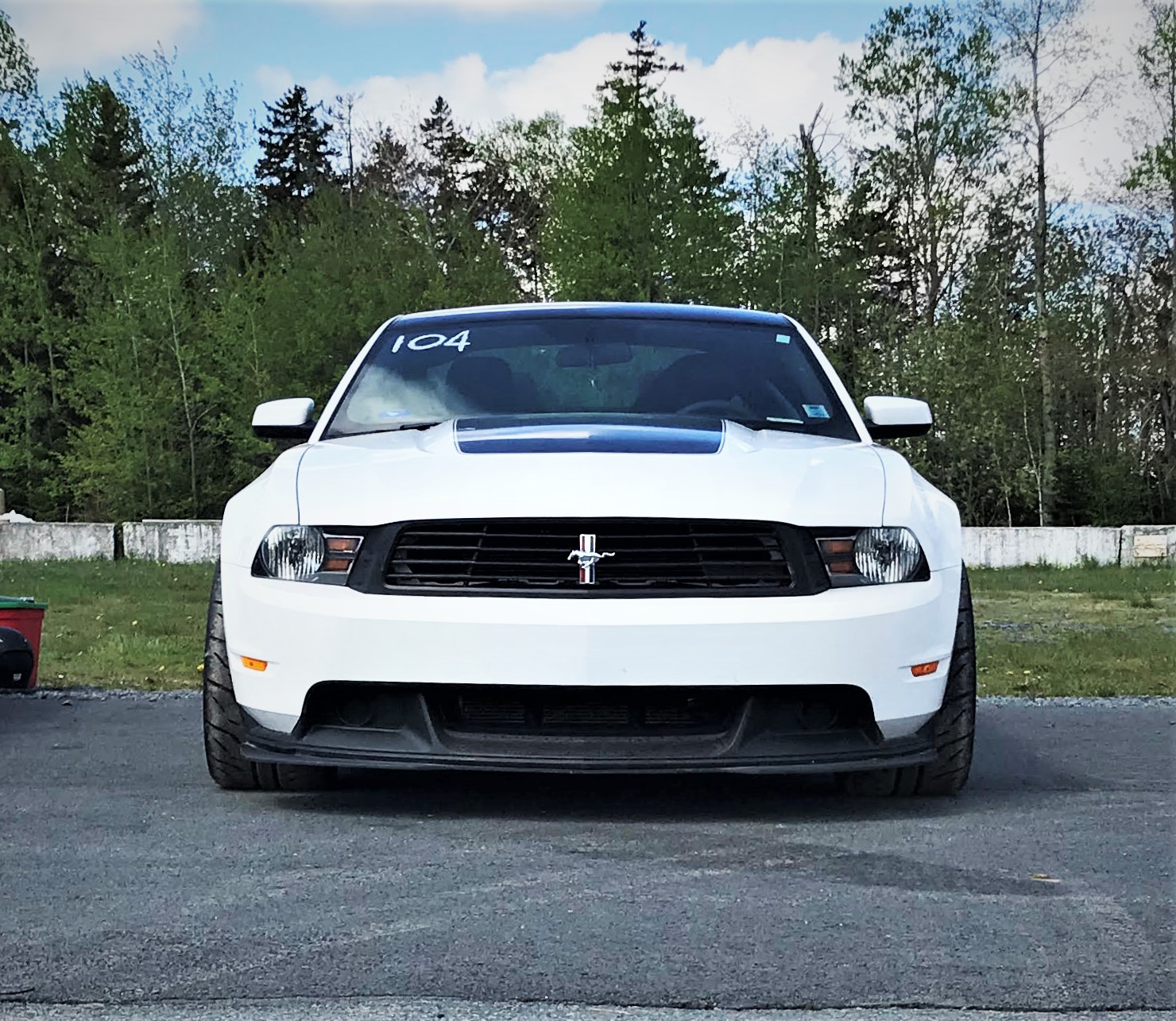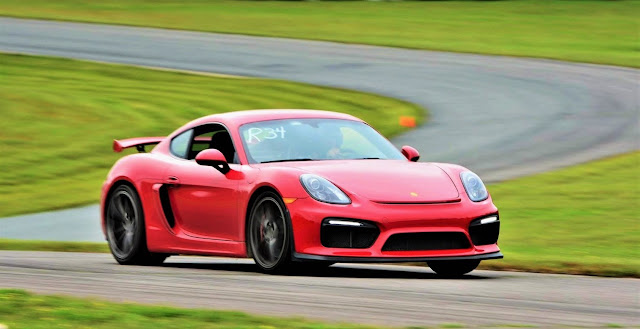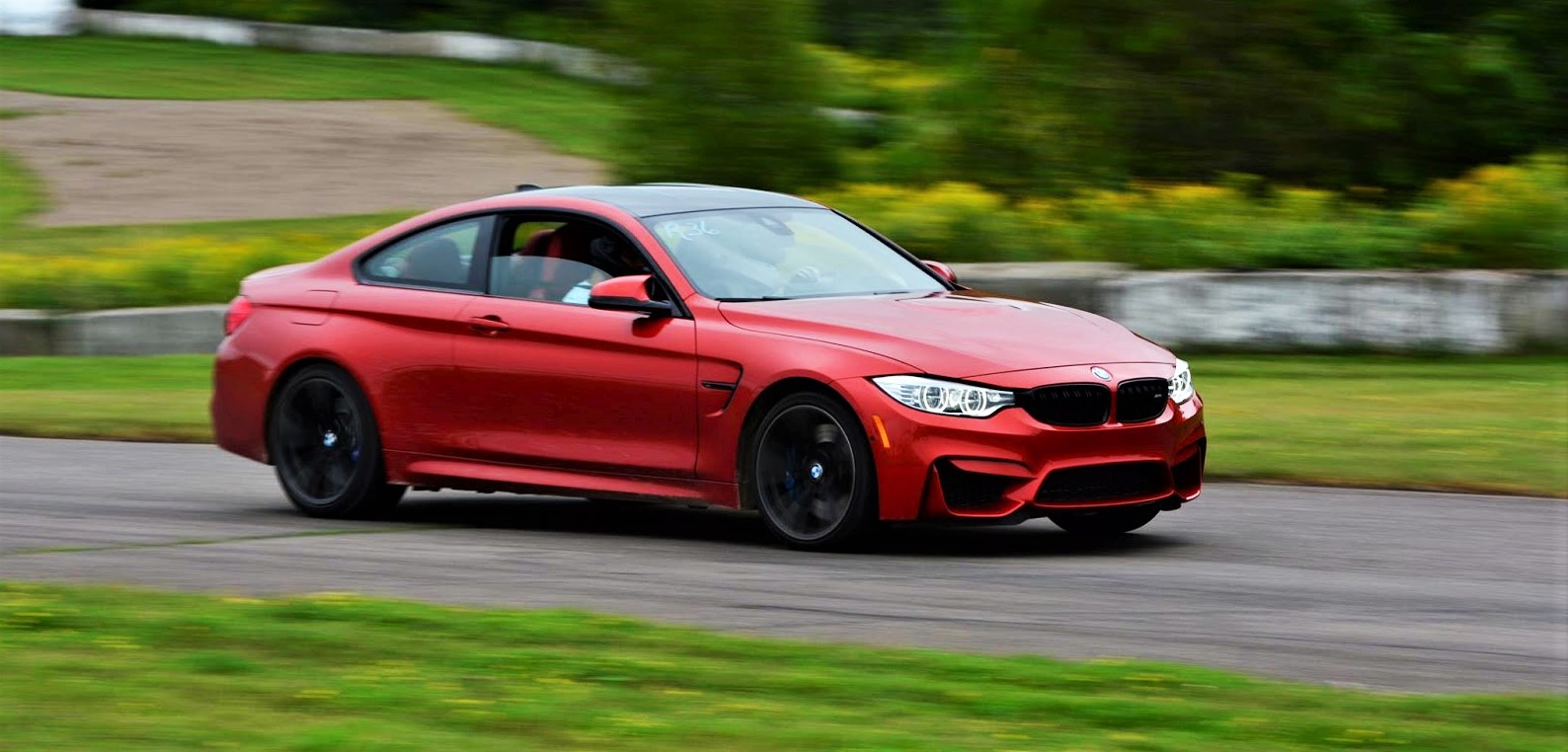 |
| Nearly lifting off at BAC Rallycross #1 2018-2019 Season - Kevin Doubleday © |
I hate potholes (what driver doesn't?). We are no strangers to them where I live due to plenty of rain and a lot of freeze and thaw cycles. I typically do my absolute best to avoid them. I cringe when I hit the smallest one. But when you're at a rallycross and you see... there's no other word for it, a little crater that's right where you want to be, what do you do? You pretend your car is a rally car and go for it. It might have helped that the car was cheap and I got it specifically for rallycross...
If you've read my first rallycross post - The Ram's Eye is going Rallycross - you already know I'm starting rallycross this season for the first time after finally picking up this car for it. The car is a 2007 VW Rabbit. It was the first manual car I came across in my budget that was in good running order and had proven aftermarket limited slip diff options. It has the standard 5 cylinder 2.5 litre engine making 150 hp. It was later bumped to 170 hp in 2008... but it is still easily one of my favourite VW engines. Aside from a few luxuries that came standard, it is pretty bare. That's great for me; less weight and less to go wrong. I'll probably gut most of it at some point, but at least it's as light as it could be until that time comes. Without changing a thing on the car, and using the crappy (and bald) all season Aeolus tires that came on it, I took the car to my first rallycross.
 |
| My VW Golf/Rabbit 2.5 on day one. Not much has changed since. |
Having done countless track and lapping days since I started in 2011, plus HPDE schools, racing, and instructing with a couple of the local car clubs, I was very eager to get out and see how good a time I can get on my first try. After my first run, I found out just how good I was (or bad, rather). My time was 65.97 seconds. It was the slowest time of the run session and turned out to be the slowest time of the day (excluding runs that had spin offs or car trouble). For reference, the fastest time in my class - stock 2WD - in that run session was 60.47 seconds. I was well off the pace I needed to be competitive. The second run session, I tried to go tighter to cones and push a little harder. And I improved! By less than a second... my second run was 65.12 s. Best in my class had dropped to 59.12 s. Something had to change.
Naturally (being a racer), I started to think of excuses. "I wonder how much my crappy all season tires are hurting me." I asked some of the regulars and I was told was that my tires are probably costing me at least 3 seconds and likely 3-4 s. With the right tires, I should be in the 61-62 second range. That was very encouraging and pumped a bit of air back into my ego. But I still had a 2-3 second gap to be competitive. My first thought after that was: "I need my car to rotate." I was driving too much like I do on track; trying to be very smooth with all inputs and keeping spinning to a minimum. There were a few tight turns ranging between 90-180 degrees that I was slowing too much for. I tried trailbraking, left foot braking, lift off throttle oversteer, but none of it really rotated the car. That had to change.
 |
| Understeer is seeing the tree that kills you - Kevin Doubleday © |
I put on my hoonigan hat and rediscovered my handbrake... Everything changed. The car rotated on command, as you'd expect. Despite watching lots of rally runs over the years and knowing that that's what it takes, it still took getting some used to. Drifting through a turn is foreign to a road racer. It isn't the quickest way around, as much fun as it could be. But this was even FAR more fun. Although I massively enjoy track driving and don't just do it for lap times, I tend to get carried away with competitiveness so I don't waste time. Drifting wastes time so I don't do it. Imagine if you HAD to slide around to go faster. I was giddy.
Once I got comfortable sliding the car around through the cones with the handbrake, I started working on better control. The technique that worked best was a combination of new and old; lift off on turn in - that transfers weight up front, front tires bite a bit better on turn in, and rear tires are unloaded - then you pull the handbrake. The car is very eager to rotate since the back tires are already unloaded. Carry opposite lock, commit to the go-fast-pedal, and hope the front tires pull you where you want to go. The result? 62.43 s. I chopped off nearly 3 seconds off my time. I was very pleased... until I saw that best-in-class had also dropped to 56.68 s.
 |
| Setting up for a turn with one hand on the wheel, one hand on the handbrake - Kevin Doubleday © |
I still had a lot to improve, but here's the thing: at the end of the day, I was still a beginner. I do have a fairly decent understanding of car dynamics and controls and I am very comfortable with pushing a car to its limits, but, unless you're a prodigy (I'm not), that's not a replacement for seat time (practice). I felt like I had got the hang of what I'm supposed to do, I just had to know exactly when and how much to do it. Since the course is laid out in cones and changes every time, everyone spends the day learning the course and improving, but I had spent the day just learning how to drive fast on gravel. My best time was a whopping 5.75 s off competitive pace. With that said, if you allow 3.5 seconds for tires - midway of the range I was told I should expect - I should be 'only' 2.25 s off pace. That is an eternity on such a short course, but I figured it wasn't too bad for my first time.
I left the day feeling fairly confident that I had figured out what I'm supposed to do, I just needed to do it better and more consistently. Knowing I would need better tires, I already had some lined up but I wanted to benchmark what the car is like as it sat to put a number to it. I found a set of used VW Passat steel wheels with used Federal winter tires.
 |
| Nearly bald Aeolus... something all season tire (bottom) vs well used Federal Himalaya WS2 winter tires (top). |
Although the tires aren't great winter tires to start with and had less than 40% tread left, I couldn't pass up on the deal since it saved me the trouble of switching the tires on the factory alloys, I just had to switch the wheels. I felt better about beating up on the steel wheels, plus they are narrower so they should allow me to go with a narrower, taller tire down the road for better grip. The wheels were in good shape too, so they alone were worth almost the full price I paid for the wheels and tires. I still expected the tires to still be a huge improvement over the all seasons despite the quality and wear. I couldn't wait to get back out. The following rallycross event was only two weeks after. That time, there was snow in the forecast. Make sure to like below so you don't miss updates on how the car is doing the rest of the season!
Follow Ram's Eye The Track Guy on Facebook and Instagram!












Comments
Post a Comment